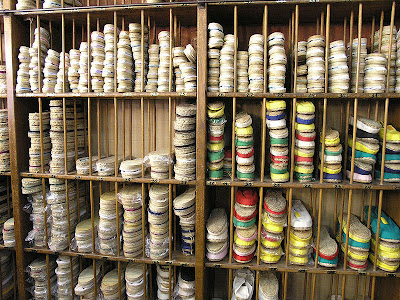Espadrilles/alpargatas are (traditionally) flat shoes made of a canvas/cotton upper and a sole made of rope or jute.
The term espadrille is French and derives from the Occitan & Catalan name for the shoes, espardenya, which derives from espart, the Occitan/Catalan name for esparto, a tough, wiry Mediterranean grass used in making rope. Espadrilles have been made in Pyrennean Occitania and Catalonia since the 14th century at least, and there are shops in the Basque country still in existence that have been making espadrilles for over a century. Often they have laces at the throat that would be wrapped around the ankle to hold the shoes securely in place.
Traditional espadrilles are worn by both men and women.
During the Spanish colonization of South America, the alpargatas were introduced to Argentina and, over time, the shoe was adapted to the specific needs of peasants and gauchos. People working
in the fields needed a stronger, more practical and comfortable shoe that was
easier, faster and cheaper to manufacture. There is now a relatively large alpargatas-industry in the country.
gaucho in alpargatas
Originally made for farmers
and gauchos, it started to catch on with the rest of the
population because of its comfort and its original style. It is today an
essential accessory for polo players who wear them after polo matches. Today,
the trend is nationwide. This shoe has become part of the Argentinean culture
and is worn by people from all classes and backgrounds.
gaucho sin boina, wearing alpargatas
But the alpargatas made it even to military footwear (be it out of neccessity); for many it was the standard (and only available) footwear during the Spanish Civil War.
José Otero Bahima, resting after a long walk, with beret,
cane, alpargatas and leather wine bottle. Tortosa (Tarragona) 1962









No comments:
Post a Comment